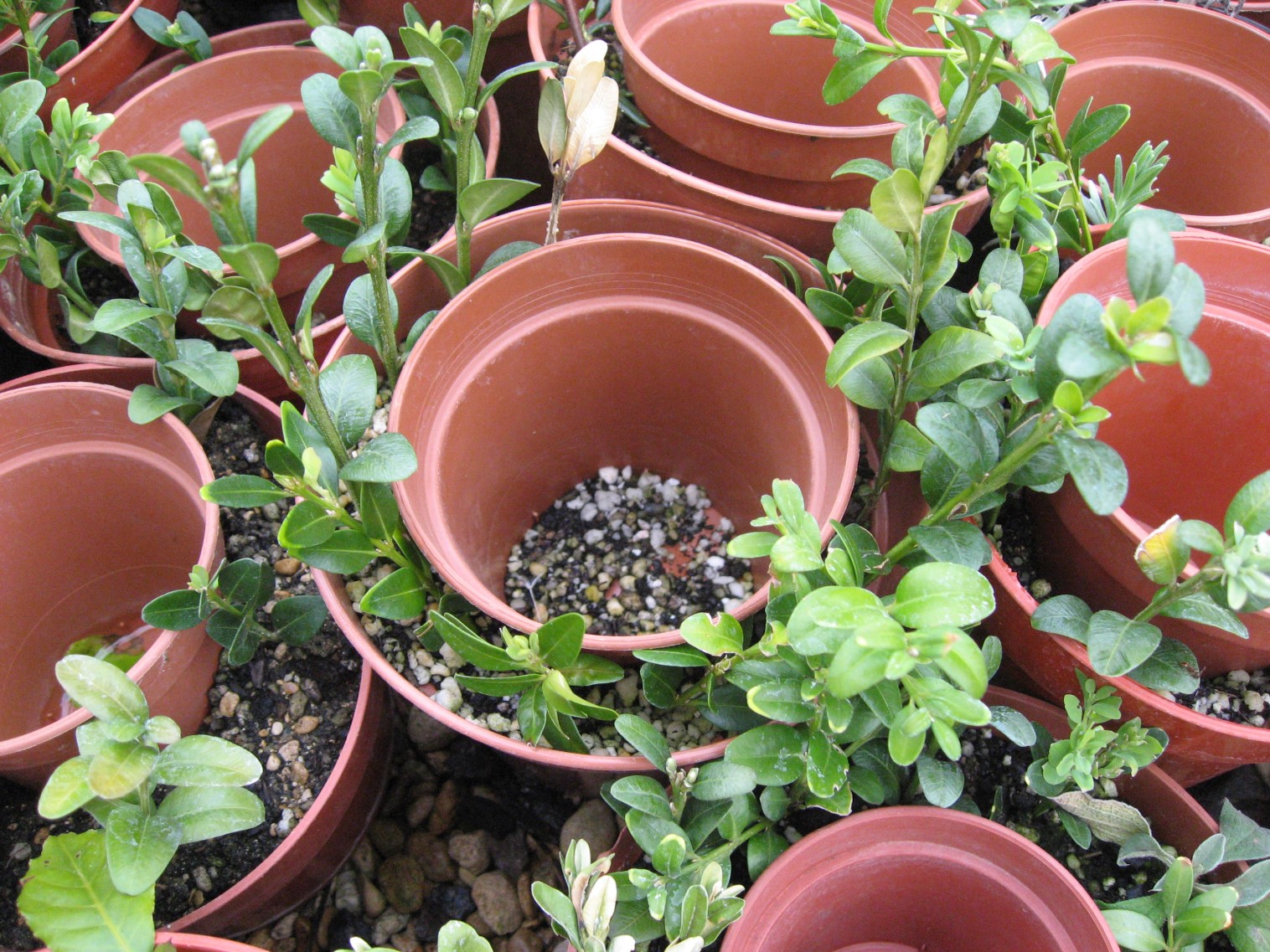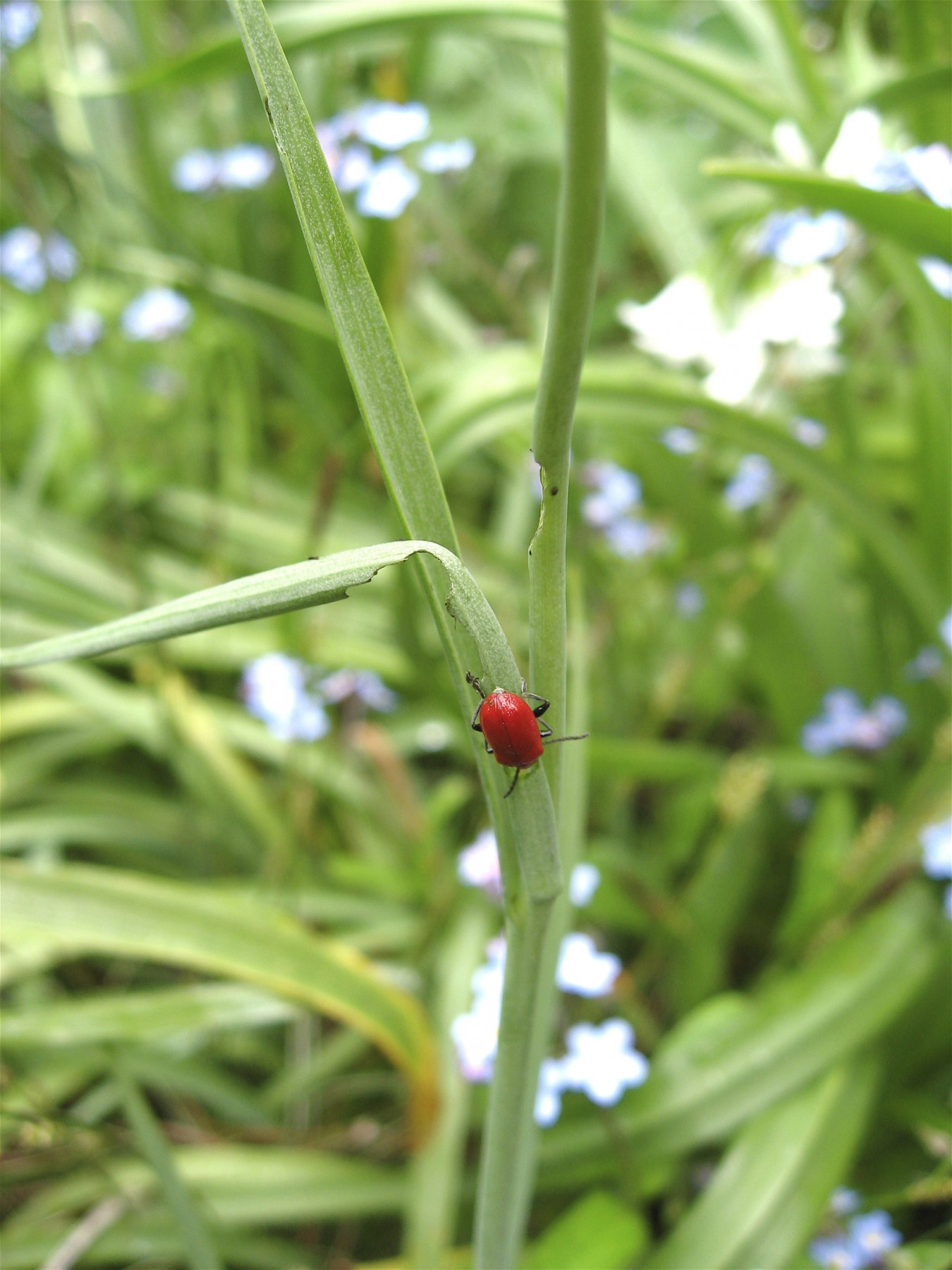
The wonderful thing about having a Hartley greenhouse is it allows you to go forth and propagate! Propagation appeals to me on so many levels. The Yorkshire part of my heritage admires the fact that I can raise plants for virtually nothing. The Christian enjoys the fact that this quote about ‘going forth and propagating’ is straight from Genesis.
Over the years I’ve learnt quite a few ‘propagation’ wrinkles and, no, I’m not just talking about my phizzog. I made an amazing discovery when I was trimming my box balls a week or two ago. They had put on an amazing amount of soft growth over our wet, warm winter and they needed trimming about four weeks earlier than usual. I use a pair of Jakoti hand shears to trim the balls and there are roughly 15 of them. They’re a little like the Rollright Stones, because when you count them he never seem to get the same number twice. You always miss one too and notice just as you sit down with a cuppa.
I dread cutting my box balls because it takes about 20 minutes to trim one into a roundel and about 10 times as long to pick up all the bits. I also frisk the box balls so that they shed all the little pieces because I think it helps to prevent box blight. Cutting them a month earlier made it easier because there was less greenery around.
I started to cut them with a heavy heart because it’s a tedious job. I had a florist’s bucket in one hand and decided to trim the top first and push the clippings into the bucket. To my surprise I found that I could go right round the whole ball and angle the bucket so it caught almost all of the cuttings. That meant that I only had a few bits and bobs to pick up.
We have three box chickens and I always make the mistake of leaving these until last. I tell myself that I’ll do the boring bit first, but when I get to the box chickens I’ve lost enthusiasm. One is a sad sight, because it was moved last autumn, so it looks more like a red fox than a box chicken/ However I’ve been assured, by a topiary specialist, that it will recover given time. I’m currently watering it once a week by tipping a bucket of warm water round the roots and I’m feeding it with a liquid seaweed food, applied via a watering can rose, and sprinkling on a high potash pellet – Vitax Q4.

The second one isn’t as bad, although it’s more duck than chicken if I’m honest. The third one is beginning to look like my daughter’s Cockerpoo, Amber. This is bad news, because the Best Beloved (whisper it) is not a fan of dogs. I have been trying to create a chicken comb on top of its head with limited success. However the head is rather small and my attempts to cut the chicken comb this year have made it look more like a dinosaur. I asked the Best Beloved to help with the trimming and now it looks more like a Scottie dog! The best topiary cutters are naturals and some have been hairdressers. Others are far more artistic than me.
One of the things about being a gardener is that you often look up how to do things and you find it’s incredibly complex. It’s a bit like a Jamie Oliver recipe of old: you need to buy up half of Sainsbury’s before you start. I once looked up box cuttings and realised it was going to take me rather a long time. The best time to take box cuttings is August, when the new growth is just beginning to toughen up. It’s pliable and bendy at that stage and you can cut off pieces about the length of an adults index finger.
Then I went to visit a garden and learnt an incredible short cut. You take two plastic pots. The smaller one measures 9 cm or 3 inches and the next one is a 4 inch pot. You put some gritty compost, with a bit of added perlite, in the bottom of the larger pot and place the smaller pot inside the bigger one and backfill the gap between the two pots with some of your mixture. Pull off the lower leaves of your box cuttings and place them in the gap between the two pots – adding a bit more compost mixture if needed. These pots then sit under the bench of the greenhouse, or in a cold frame. You can check on the roots by lifting the small pot and then pot them up as needed.
I grew my own box balls from cuttings using this method some 15 years ago. At the time a lot of the box in garden centres had box blight. I made a crucial mistake though. I only put one six-inch high small box tree in each gap. Box is fairly slow-growing so my box balls took eight years to reach any size at all. I always say it was like watching an old man blow up a balloon. I should have made a ring with five cuttings and then I would have had sizeable box balls within 4 to 5 years.

Box blight (Cylindrocladium buxicola – syn. Calonectria pseudonaviculata) has been around for a long time but gardening friends have tackled it in different ways. One head gardener cut out the affected parts and then fed the rest with seaweed feed on a regular basis. In time the gaps filled with healthy new box shoots.
Another gardener I know, who has a walled garden full of box hedges, was devastated when she spotted it. She removed one entire hedge at the base, just sawing it off, and burnt the infected material. She intended to dig up the hedge in the winter, but didn’t find the time, and when it began to regrow the next spring the box was healthy again. Box blight does not affect the roots of the plant.
This blight is no respecter of class either for Highgrove, the garden HRH Prince Charles, was badly affected and so was Sir Roy Strong’s Herefordshire garden. Like most blights it thrives in warm, moist still air. We don’t get much of that up in breezy Cold Aston and so far, so good!
We’ve now got the Asian box hedge caterpillar (Cydalima perspectalis) to add to our woes, although I haven’t seen it at Spring Cottage. The adult moth seems to have arrived in 2007 and the first caterpillars were identified in a London garden in 2011. At first it was confined to the London area and the south of England, but it’s heading north. A gardening colleague based in Newbury has had problems with it. It’s now been found in Wales, Scotland, Ireland and Northern Ireland.
The first sign is a white web-like covering and then the caterpillars hatch out. They’re not dissimilar to cabbage white caterpillars to look at, being a mixture of green, yellow and black. They consume most of the leaves and those who have suffered seem to get it in subsequent years. The inconspicuous Delta-winged moths are cream-white with an almost black edging to the wing.
Alien pests are much more of a nuisance than native pests, because when they arrive most have no natural predators. The red lily beetle from Asia, which has been here since the 1930s, is only just being targeted by parasitic wasps – also from Asia. Most of us still have to resort to picking the blighters off our fritillarias and lilies, although I’ve largely given up on lilies.

The National Trust’s Ham House near Richmond in Surrey, a lovely place to visit by the way, had an outbreak of box hedge caterpillar. The box hedges and topiary are a large part of the garden and there was consternation when the gardeners spotted these caterpillars. They were well on their way to annihilating parts of the topiary.
Ham House, a peaceful oasis, is run organically and it teems with life. What does an organic gardener do when faced with a problem? Well, much of organic gardening involves sitting on the fence and waiting ( and hoping) to see what happens. Nature is dynamic and one year you can have a population explosion and the next year nothing or very little.
It takes a certain sort of courage to stand back, but stand back the Ham House gardeners did. To their amazement jackdaws arrived and ate the caterpillars. When the second wave of caterpillars arrived, the jackdaws returned. This alien does have a predator – the hungry jackdaw!
I am surrounded by jackdaws and constantly springing up and knocking on the kitchen window to keep them off the peanuts. I love them dearly, but once one arrives it calls to the rest. Then the bird on the feeder chucks nuts down to his mates on the ground. Within a minute or two your expensive peanuts (designed to feed blue tits, great tits, nuthatches and great spotted woodpeckers) have gone. If I get it box caterpillars I shall expect my jackdaws to sort the problem out for me. I certainly WON’T be reaching for a chemical!



